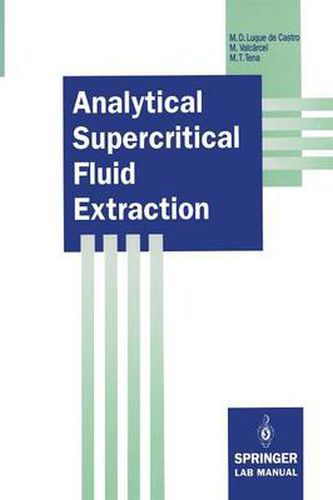Readings Newsletter
Become a Readings Member to make your shopping experience even easier.
Sign in or sign up for free!
You’re not far away from qualifying for FREE standard shipping within Australia
You’ve qualified for FREE standard shipping within Australia
The cart is loading…






This title is printed to order. This book may have been self-published. If so, we cannot guarantee the quality of the content. In the main most books will have gone through the editing process however some may not. We therefore suggest that you be aware of this before ordering this book. If in doubt check either the author or publisher’s details as we are unable to accept any returns unless they are faulty. Please contact us if you have any questions.
Recent advances in analytical chemistry have turned it into a virtually unrecognizable science compared to a few decades ago, when it lagged behind other sciences and techniques. However, advances in analytical science have been far from universal: while innovations in instrumentation and data acquisition and processing systems have reached unprecedented levels thanks to parallel breakthroughs in computer science and chemo metrics, progress in preliminary operations has been much slower despite their importance to analytical results. Thus, such clear trends in analytical process development as automation and miniaturization have not reached preliminary operations to the same extent, even though this area is pro bably in the greatest need. Improvement in preliminary operations is thus an urgent goal of analytical chemistry on the verge of the twenty first century. Increased R&D endeavours and manufacture of commercially available automatic equipment for implementation of the wide variety of operations that separate the uncollected, unmeasured, untreated sample from the signal measuring step are thus crucial on account of the wide variability of such operations, which precludes development of all-purpose equipment, and the complexity of some, particularly relating to solid samples. Supercritical fluid extraction opens up interesting prospects in this context and is no doubt an effective approach to automatioI1 and mini aturization in the preliminary steps of the analytical process. The dramatic developments achieved in its short life are atypical in many respects.
$9.00 standard shipping within Australia
FREE standard shipping within Australia for orders over $100.00
Express & International shipping calculated at checkout
This title is printed to order. This book may have been self-published. If so, we cannot guarantee the quality of the content. In the main most books will have gone through the editing process however some may not. We therefore suggest that you be aware of this before ordering this book. If in doubt check either the author or publisher’s details as we are unable to accept any returns unless they are faulty. Please contact us if you have any questions.
Recent advances in analytical chemistry have turned it into a virtually unrecognizable science compared to a few decades ago, when it lagged behind other sciences and techniques. However, advances in analytical science have been far from universal: while innovations in instrumentation and data acquisition and processing systems have reached unprecedented levels thanks to parallel breakthroughs in computer science and chemo metrics, progress in preliminary operations has been much slower despite their importance to analytical results. Thus, such clear trends in analytical process development as automation and miniaturization have not reached preliminary operations to the same extent, even though this area is pro bably in the greatest need. Improvement in preliminary operations is thus an urgent goal of analytical chemistry on the verge of the twenty first century. Increased R&D endeavours and manufacture of commercially available automatic equipment for implementation of the wide variety of operations that separate the uncollected, unmeasured, untreated sample from the signal measuring step are thus crucial on account of the wide variability of such operations, which precludes development of all-purpose equipment, and the complexity of some, particularly relating to solid samples. Supercritical fluid extraction opens up interesting prospects in this context and is no doubt an effective approach to automatioI1 and mini aturization in the preliminary steps of the analytical process. The dramatic developments achieved in its short life are atypical in many respects.